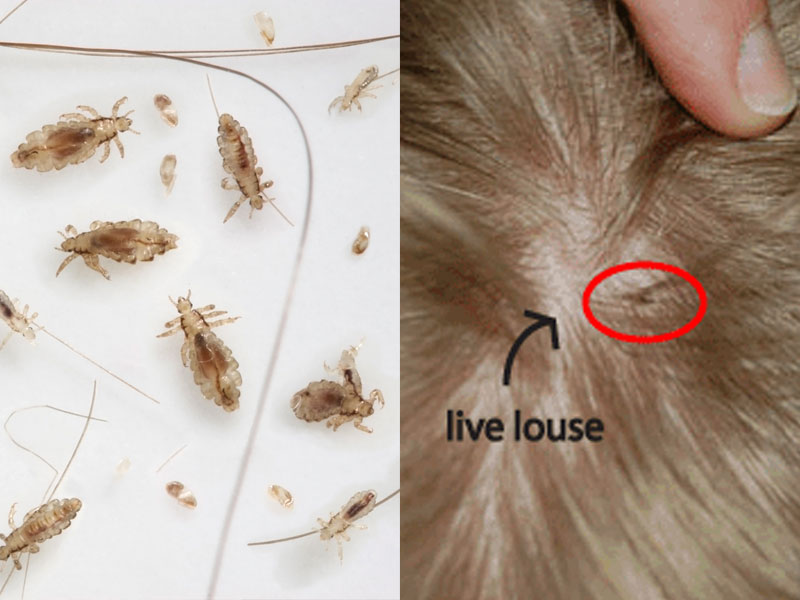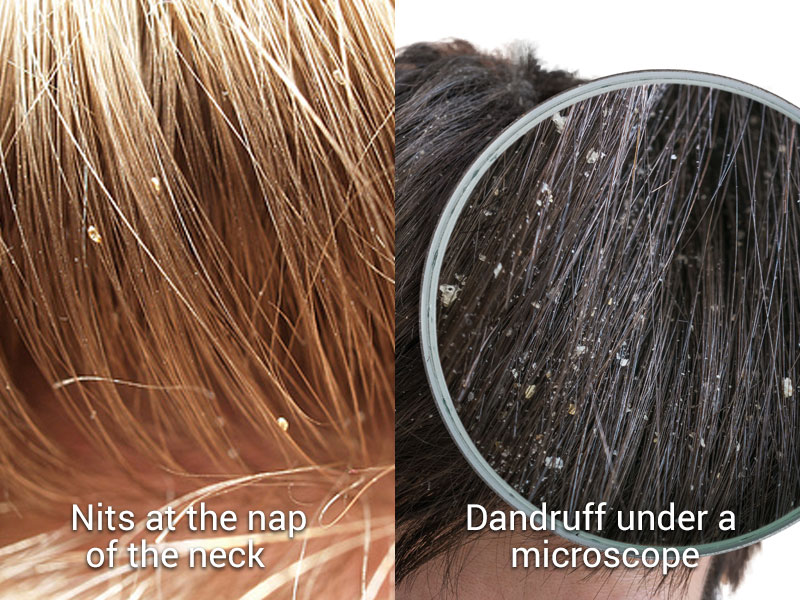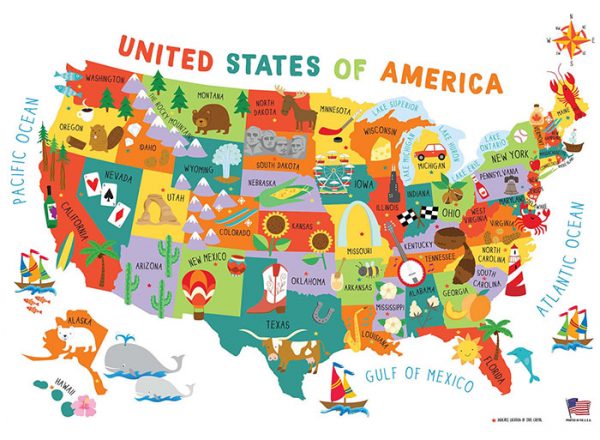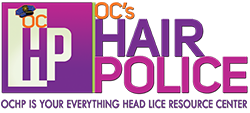Project Description
FAQ’s
Head lice are tiny, wingless human parasites. The nit (egg) is approximately the size of a sesame seed or smaller. The adult head louse is comparable to an ant and/or gnat in width and length. They have six legs with tiny claws and live only on human scalps. Head lice can range in color from light brown to gray. While annoying, head lice are not life threatening.
Head lice have been infesting humans throughout history. It is difficult to track head lice cases because head lice are not considered a disease and therefore public health departments and the Centers For Disease Control (CDC) do not routinely track the number of head lice cases. However, schools and manufacturers of lice products estimate head lice cases at 12- 25 million infestations each year in the United States alone. Most of those infested are children under the age of twelve.
Lice migrate through direct contact with an infested person and/or their belongings. Head lice do not hop, jump, fly, or swim. Pets do not transmit head lice. Poor personal hygiene does not cause an infestation. In fact, head lice prefer clean, healthy heads. Head lice do not live in, nor come from, the dirt, trees, or the air. They live on the human head.
A prescription medication called Kwell should never be used. Kwell contains Lindane, a powerful neurotoxin and possibly carcinogenic pesticide, which can cause serious side effects including seizures and even death. Consumer Reports has petitioned the Food and Drug Administration to remove this pesticide from the market. Children and the elderly are particularly vulnerable to Lindane toxicity.
People should also be aware that according to entomologists, any parasite over time can develop resistance to pesticides. It is not surprising therefore, that many consumers, health professionals, and entomologists report that head lice have become resistant to pediculicides. Failure to follow directions and/or lack of thorough nit-picking can compound the challenge of eradicating a persistent infestation.
Lice lay their nits close to the scalp. It used to be thought that nits further than 1/2 inch from the scalp were not viable. However, new research indicates that this is not true, especially during warm weather. Therefore, removing or pulling the nits beyond 1” of the scalp is the only sure way to get an infestation under control. Nits need the heat from the human scalp in order to incubate and hatch. This necessary heat does not generate beyond 1” from the scalp.
Getting rid of head lice requires perseverance.
HOW LICE SPREADS
Head lice do not come out of the air or from the ground. They are human parasites. As long as humans exist so too will head lice.
Head lice can be spread whenever there is direct contact of the head or hair with an infested individual. Head lice can also be spread through the sharing of personal articles like hats, towels, brushes, helmets, hair ties, etc. There is also a possibility of spreading head lice via a pillow, headrest, backpack, car seat, or similar items.
Body lice is associated with poor hygiene which has unfortunately created the modern day stigma for head lice. In stark contrast to body lice, head lice are actually not scientifically linked to poor living conditions preferring and are most prevalent instead on individuals whom have good hygiene and acceptable grooming habits.
If a louse (single head lice) comes off the head and is left behind on a pillow or head rest, it may be possible for the louse to infest another individual who places their head in that area for a period of 24-48 hours should the louse remain in the vicinity as well.
Head lice do not hop, jump, fly, or swim and generally cannot survive longer than 24 – 48 hours off the Host (the human head).
Lice are hatched from eggs called nits. Once laid, it takes 7-10 days for a nit to hatch. Nits off of the head will not hatch as they must be laid close to the scalp. Nits require the heat generated from the human scalp in order to incubate.
Lice require human blood to survive. They must have a “blood” meal every 4 hours in order to thrive. They extract the blood from the human scalp. The life span of head lice is 33-35 days laying 6-10 nits daily prior to its natural demise.
A nit hatching off of a head results in a tiny nymph head louse which, without an accessible or nearby human, is doomed because it requires an immediate blood meal.
Head lice are Host specific. Human head lice cannot be transmitted to or from pets or other animals.
HEAD LICE

Head Louse (Singular)
The exoskeleton of the head louse is on the outside of their body.
The human head louse cannot become resistant to Non-Toxic Proprietary ABSOLUTE CLEAR enzymes EVER because it breaks down the exoskeleton of the louse versus attacking the nervous system. The nervous system incorporates the ongoing evolution of specific genes within it’s gene pool to ultimately develop the necessary resistance in order to solidify its existence. The exoskeleton of the head louse cannot do the same in order to ward off its destruction visa vie Non-Toxic ABSOLUTE CLEAR enzymes.
Size of Head Lice
The ultimate size of head lice is no bigger than that of an ant and/or a gnat. The nit (egg) is comparable to the size of a sesame seed. Observed here to actual hair strands and on the scalp.


Detection of Head Lice
Nits and Head Lice can be mistaken for dandruff, DEC plugs, hair muffs, general debris from a good kid day spent outdoors, and/or excema. Nits are adhered to the hair shaft with a glue like substance. Nits are not easily removed. For the most part, all other substance in the hair should crumble in your hand, flake off if softly blown upon, or gently flicked and/or swiped at with the fingertips.
“Act as if what you do makes a difference. It does.” – William James
OCHP is your EVERYTHING HEAD LICE Resource Center
OCHP seeks to provide your local community with our non-toxic head lice product line & professional removal service referrals. We believe in a centralized focused effort in combatting head lice infestations inclusive of our Non-Toxic ABSOLUTE CLEAR enzymes while establishing and supporting quality Head Lice Removal Service Companies with our non-toxic product line & a manual removal process that is guaranteed to eradicate head lice each and every time!
SHOP ONLINE, LOCATE HEAD LICE REMOVAL SERVICES NEAR YOU,
ACCESS OUR DIY FORUM!
ACCESS OUR DIY FORUM!
SERVING YOUR COMMUNITY WITH NON-TOXIC HEAD LICE PRODUCTS & REMOVAL SERVICE REFERRALS!


Your Location + Our Vocation = Head Lice Eradication
CALL OR EMAIL TODAY! 949.631.2675 · lousearrest@hairpoliceliceline.com
CONTACT US FOR PRODUCT INQUIRIES, LOCAL HEAD LICE REMOVAL SERVICES, AND/OR HEAD LICE GUIDANCE AND ADVISE.
PROFESSIONALS CONTACT US FOR SUPPORT AND PRIVATE DISCUSSION. YOUR COMMUNITY NEEDS YOU!
We will do our very best to open dialogue within the same day as your sent email. With respect to head lice removal service inquiries, we know you are anxious and will attempt to expedite our response to within one hour of your communication to us. We are “In It To Win It With You!”


